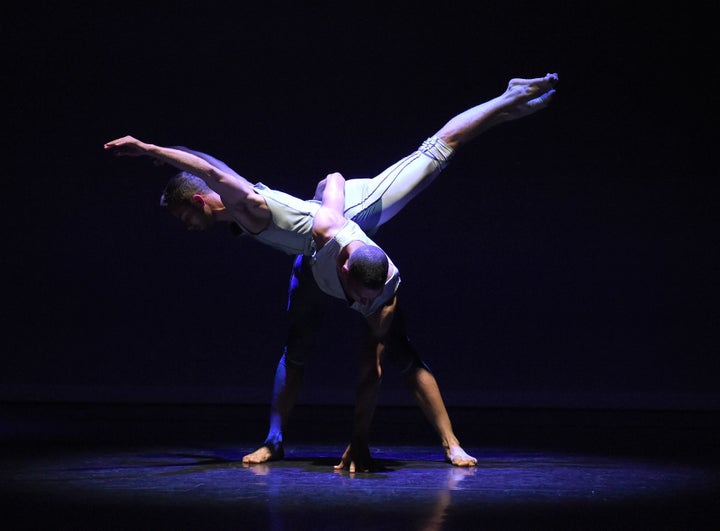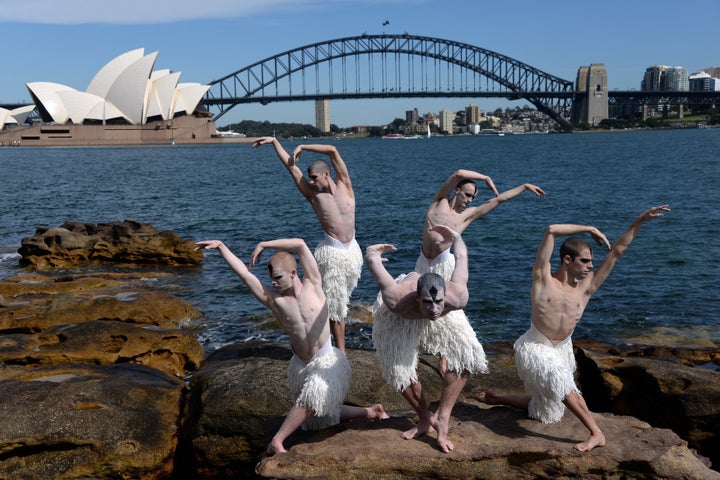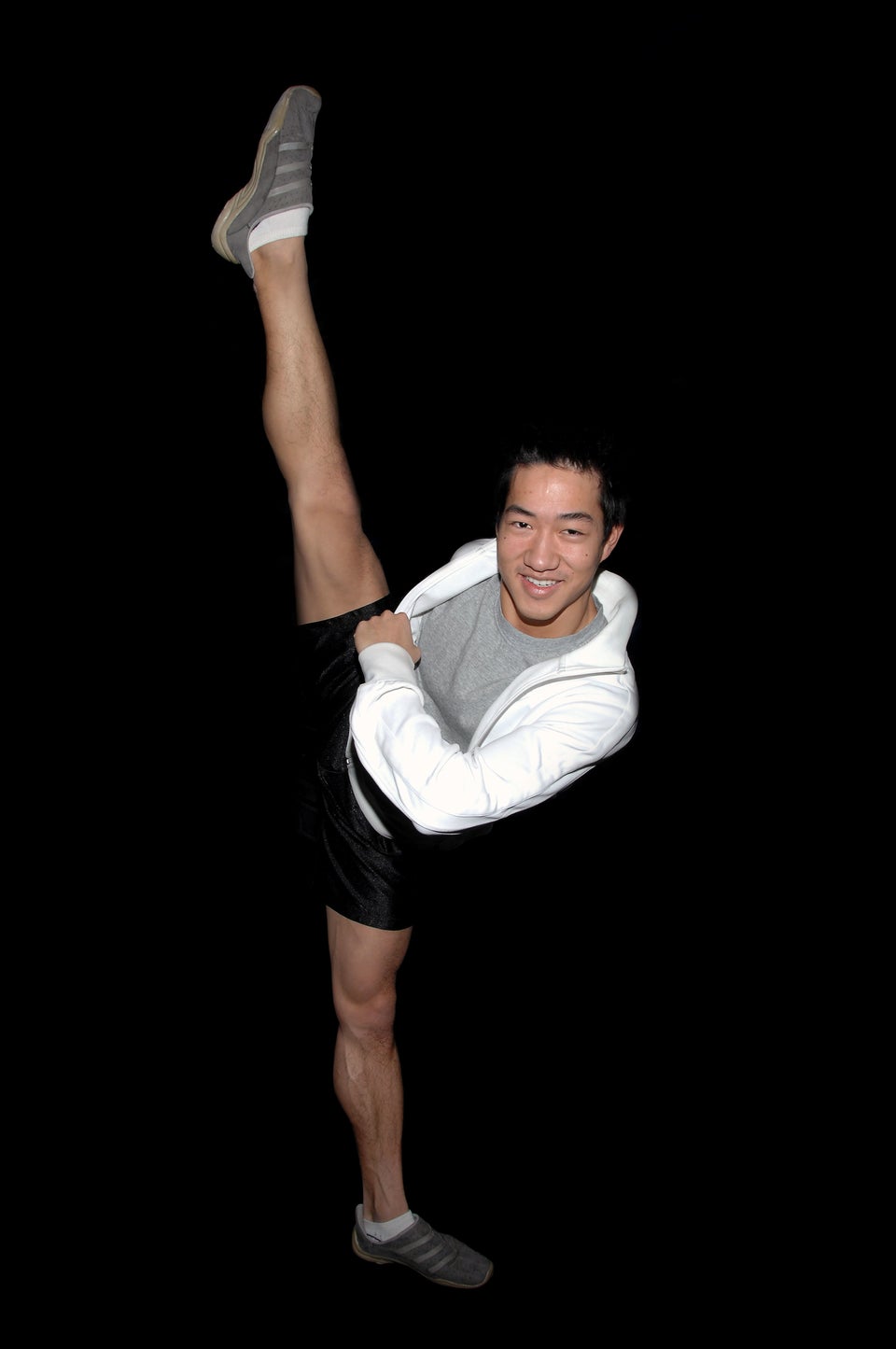
In this series, The Huffington Post profiles some of the best ballet dancers in the world, working in some of the rarest and most unusual work environments imaginable, to try to understand how they deal with the same workplace issues that confront the rest of us mere mortals.
Most of us don’t get literal standing ovations from hundreds of people when we do good work. And most of us don’t have to visit the physical therapist at the beginning and end of every workday. But no matter what sector we’re in, the big questions are the same: What does it mean to have your body under scrutiny on the job? How does it feel to be asked to represent your entire race in a company meeting? How do you find the right people to mentor and guide you?
Read the first installment, about being the kind of partner people fight to work with, here. In this installment, we talk to two dancers from the English company BalletBoyz.
Don’t let the name of their company fool you: Harry Price and Andrea Carrucciu, who dance with the English company BalletBoyz, are runaways from the ballet world. Well, from one part of it, at least. Both men had conventional ballet training as children and teenagers, and both left the strictures of classical ballet for a looser and more contemporary style that doesn’t look like what most people think of when they think of ballet.
For one thing, there are no women. There’s not a tutu or pointe shoe in sight. BalletBoyz, founded 15 years ago in London by Michael Nunn and William Trevitt, former dancers with the Royal Ballet, is a men’s company that performs mostly contemporary ballet -- which means none of the "Romeo and Juliet," "Sleeping Beauty," or "Giselle" productions that you’d find in a traditional ballet company.
The transition that Price and Carrucciu made -- from classical ballet and its emphasis on tradition, to contemporary ballet and its embrace of innovation -- will be familiar to those of us who have transitioned within industries over the course of our careers.
In switching from classical ballet to contemporary ballet, these dancers have moved from print and into digital, from network television to streaming. They’re still using the core principals they learned during their classical training and the foundations they built in their bodies during years at the barre. But the end result now looks very different than it might have if they’d stayed in ballet’s equivalent of radio, instead of transitioning into podcasts.
The performances BalletBoyz staged during their February tour of the U.S. contained many things you wouldn’t find at most classical ballet performances -- multimedia, electronica, a sense of humor, jeans. During their shows at New York's Joyce Theater, the company danced two pieces of work: "The Murmuring," a writhing, sinuous and exhausting-looking ensemble piece with huge lifts set to foreboding electronic music and thumping bass; and "Mesmerics," a short Christopher Wheeldon ballet with intimate, intricate partnering and soaring, long-limbed leaps.
In "The Murmuring," the guys are dressed for a warm spring day in gentrified Brooklyn, wearing plaid shirts, tight tees and straight leg jeans in various muted shades. The video that precedes the performance compares the choreography to a flock of birds, and it’s apt. The men move as one for stretches of time but then, the formation twists and mutates as dancers remove themselves and drag the flock in a different direction.
The dancing is by turns beautiful, with men lifting each other high in the air to make gorgeous, elegant shapes, and combative, with men throwing and pushing each other in a way that suggests internal and collective struggle. In "Mesmerics," they wear tights and singlets that flare up at the bottom when they turn, like tiny tutus. Dancing mostly in units of two, they climb on each other’s bodies and mirror each other’s movements. It’s bruising dancing -- literally.
Despite a childhood and adolescence spent taking ballet classes, Italian-born Carrucciu knew by the time he was 16 that though he wanted a career in dance, he didn’t want to spend his life dancing classical ballet. So he left home (and his homeland) and joined a series of contemporary ballet companies, where the style of movement is freer and the stories he gets to tell with his body are less conventional than the fairy tales and old-world folk stories that form the basis of so much classical ballet.
Price came up through the English National Ballet School, a crucible of classical dance, but never felt like it was the right fit for him. Around him, his classmates were vying for spots in prestigious classical companies. Price said he felt stifled by the rigidity of classical ballet, so he joined a contemporary company in Poland and then toured the world in the all-male production of "Swan Lake" that you’ll recognize from the movie "Billy Elliot."

Now that he’s with BalletBoyz, Price says he feels like he’s found the right balance between classical and contemporary ballet. So, what is it like dancing ballet with a bunch of dudes all day? Ballet is famously a place where women take the discipline’s perfectionism out on their own bodies, but what about the men? What’s it like for a man to work alongside men with amazing bodies all day long?
“It’s so weird to explain it other people. You look at yourself in the mirror for eight hours a day -- who else does that?” Price says. It’s weird for everyone else, but normal for dancers.
“You grow up in front of a mirror,” Carrucciu says. But there’s no competition between the guys for who has the best bodies, he adds, because each of them has different strengths. “I know that if I pump my body too much, I would lose my flexibility, and because I know one of my strengths is my flexibility, I’d rather have less pumped up muscles and keep that quality.”
If there is competition, he says, it’s friendly and less about who’s ripped (spoiler: all of them) and more about learning skills from each other. “Everyone has a different body, everyone has a different background, everyone has a different personality.” Price says he ran away from the classical ballet world because of the scrutiny of people’s bodies and the demand that everyone fit the mold of a particular body type. In BalletBoyz, however, “we’re good at showing off each other’s strengths.”
Price and Carrucciu both grew up training next to women, and learning to partner women, something they rarely do these days. They say that when it comes to partnering, the differences are significant. For one thing, it’s a lot harder to lift men.
“If you have a female to dance with, it’ll be easier,” Carrucciu says. “It’s so light. They’re so easy to lift, you just throw them up there!” Learning to lift other men, they both agree, requires a level of collaboration and improvisation that wasn’t necessary in classical ballet. “With men, we have to find the physics of the lift, we have to research it. We have to figure out the counterbalance and study the lifts more,” Carrucciu explains.
“It’s about using each other’s weights to create the lift instead of just lifting someone,” Price agrees. A lot of improvisation, experimentation and trial-and-error go in to the breathtaking lifts they do onstage. Instead of learning to replicate the same moves that have been done in classical ballet for decades, they’re using their all-male company as a catalyst to create new ones. This is part artistic opportunity, and part anatomical necessity: If they try to do lifts in the way they learned with women, Price laughs, “we’re going to break each other.”
All things considered, these runaways are happy with the choices they made. Their detours off the well-plotted career path of classical ballet are paying off, and allowing them to do the kind of dancing that best suits their talents and their passion. They still think of themselves as ballet dancers, but they’re enjoying the freedom of building something new on top of their classical foundation. Something unusual, something far less strict and far less pretty than what they’d find in a conventional ballet company. Something consistently forward-looking. “We like classical ballet,” Carruccio says, “but we couldn’t do that for the rest of our lives.”
Find a list of BalletBoyz's upcoming U.K. tour dates here.

